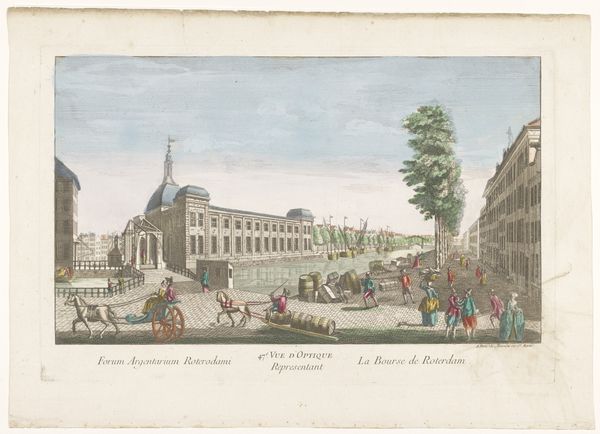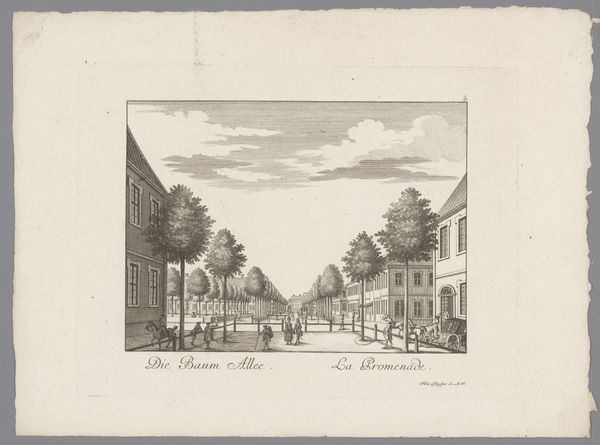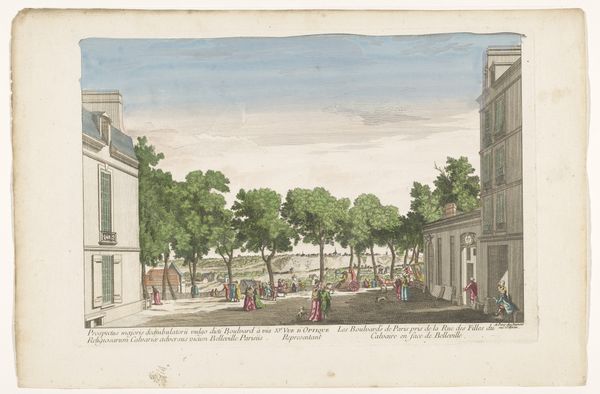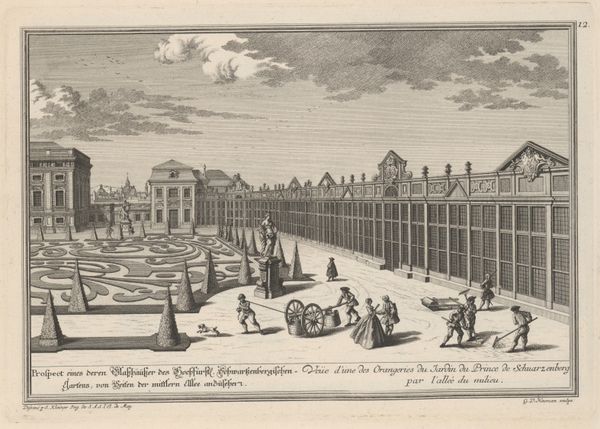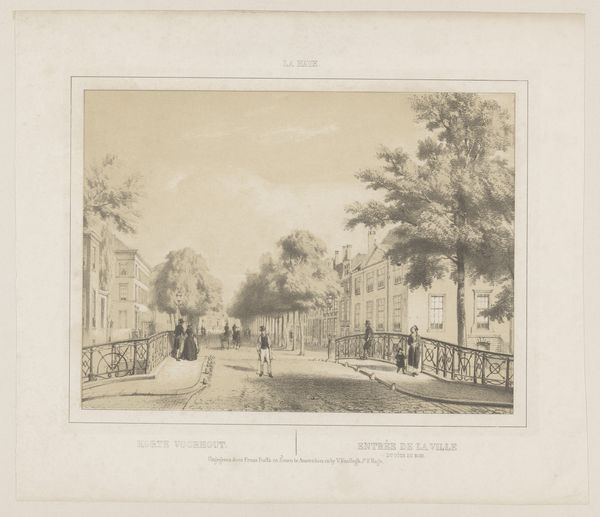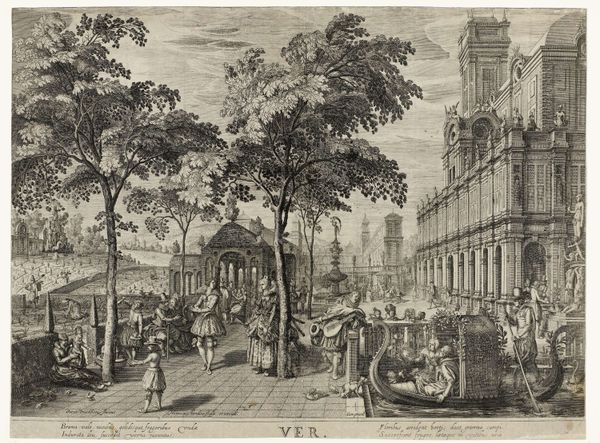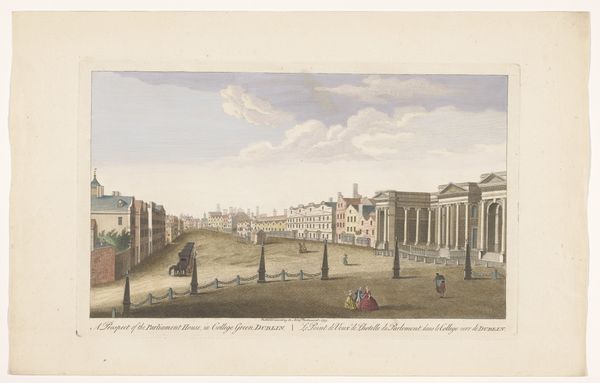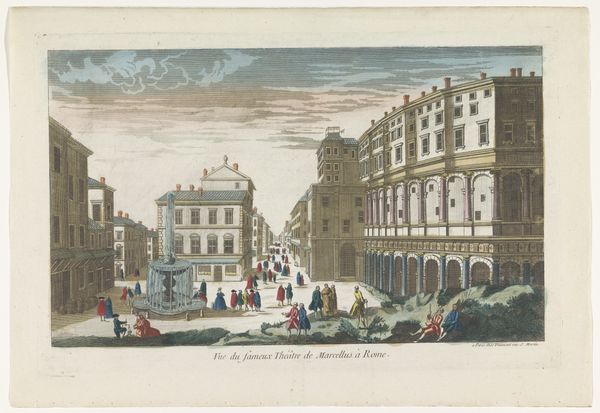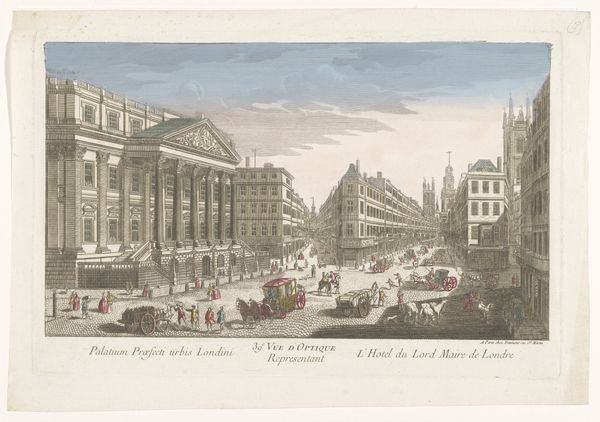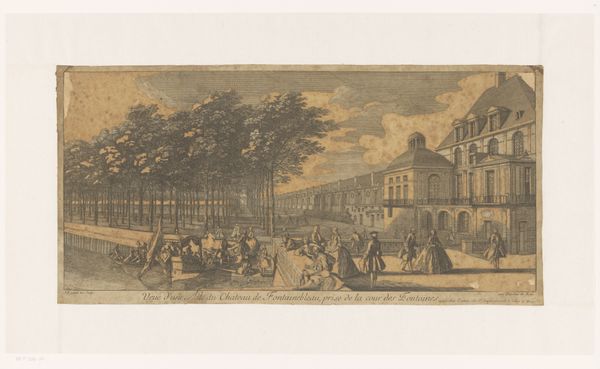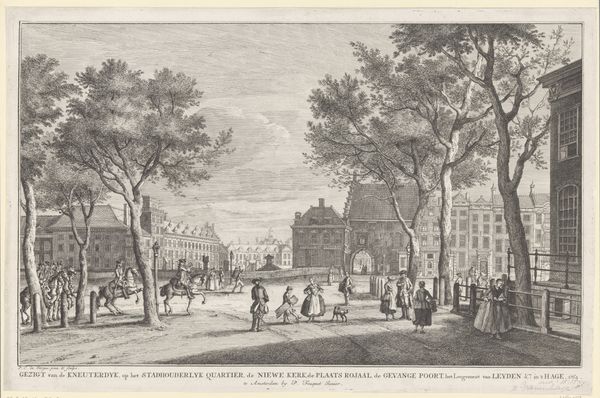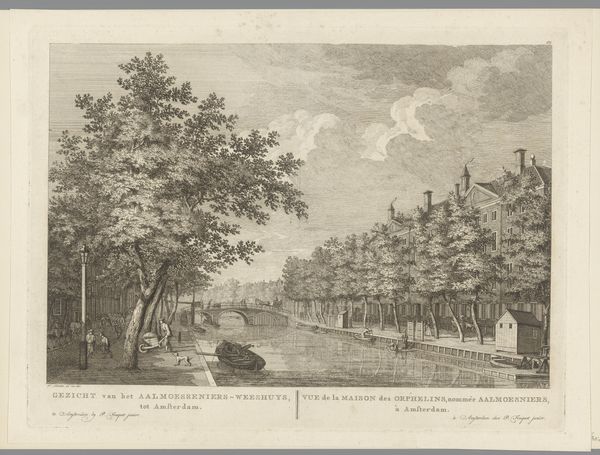
Dimensions: height 275 mm, width 405 mm
Copyright: Rijks Museum: Open Domain
Editor: This is an engraving from sometime between 1750 and 1825, titled "View of a Canal in The Hague". It has such a formal, ordered quality… I'm curious how you interpret this piece. What do you see here? Curator: I see a stark depiction of power and its physical manifestation in urban space. This isn’t just a cityscape; it's a visual document reflecting the societal structures of the Dutch Golden Age transitioning into a new era. The very lines of the engraving suggest a rigid hierarchy. Notice how the "Canal and Hotel of the Canon Foundry" dominate the composition? Editor: I hadn't thought about the title that way. So, you're saying it's less about the pretty scene and more about the cannon foundry? Curator: Precisely. It begs the question: whose perspective are we seeing? Who commissioned this? The cannon foundry represents military might and colonial ambition, intrinsically linked to exploitation. How does the rendering of ordinary people—walking, riding—in relation to this suggest their agency or lack thereof? Are they active participants, or simply props in a display of power? Editor: I see your point. The people almost seem like decorations leading your eye to the main subject... It definitely adds a layer of complexity that I hadn't noticed at first glance. Curator: And what about the canal itself? Canals weren't just for transport; they were arteries of commerce, often built and maintained through coerced labor. Consider the environmental impact, the disruption to local communities, all for the sake of expanding economic and military reach. This image invites us to question the narrative of progress inherent in landscape art. Editor: This has given me a completely new way of viewing this artwork, from simply a historical landscape to a commentary of society! Curator: Indeed! It is a great starting point to explore and question established narratives, especially how landscapes often served as subtle tools for justifying and perpetuating the existing power structure.
Comments
No comments
Be the first to comment and join the conversation on the ultimate creative platform.
